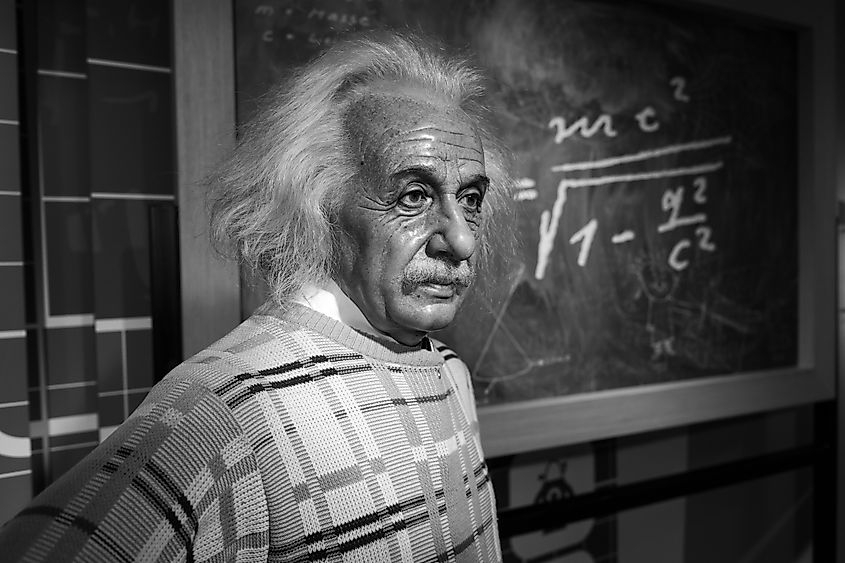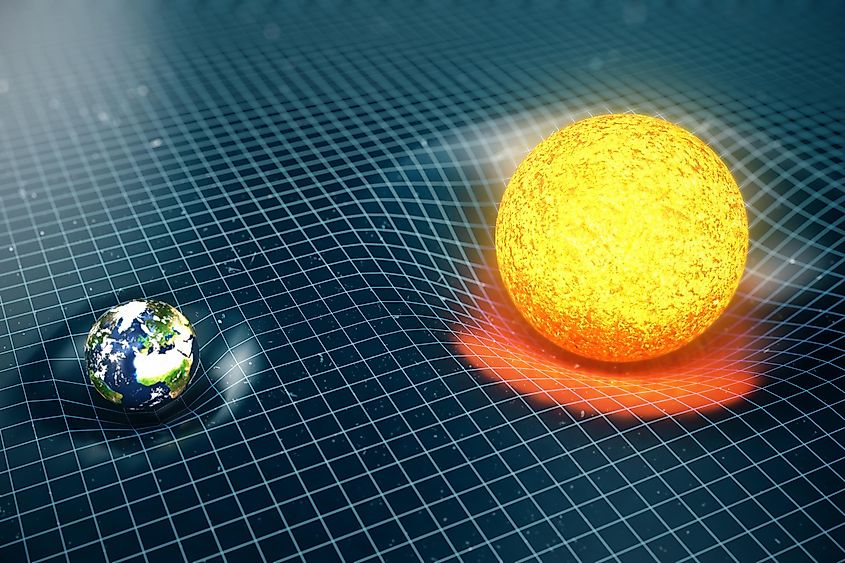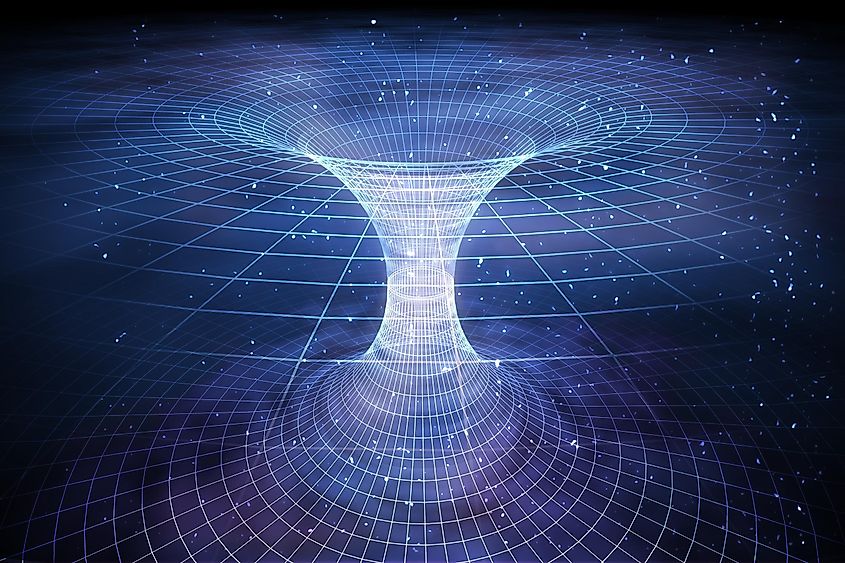Is Time Travel Possible?

- Forward time travel is possible under the laws of physics
- Speed and gravity can both slow the flow of time
- Forward time travel is possible, yet backwards probably isn’t
The concept of time is one of the most mysterious concepts in physics. At one point in everyone's lives, they likely ponder the possibility of traveling through time, either to the past or the future. Would it be possible to travel through time, either backward or forward?
Forward Time Travel

Albert Einstein once asked what would happen if you were to chase a beam of light. Using models of classical physics, scientists believed that the speed of the light would be relative to your velocity and position. For example, if you're in a car (assuming there's no friction or way of telling that you're moving), it looks as though the world outside of your vehicle is moving towards and away from you. Amazingly, calculating the car's speed or the speed at which objects outside the vehicle move towards you will yield the same answer. If you happen to be driving next to another car moving at the exact same speed as you, it appears as though the other car is stationary. Thus the speed and position of an object are dependent on your speed and position. According to classical physics, this should also apply to light. If you could chase a beam of light and move at the same speed as the light, it would appear stationary. You would measure the speed of light as being zero. However, it turns out that's not at all how it works. Instead, the speed of light remains constant regardless of your position or speed. Furthermore, the speed of light remains constant irrespective of how fast the object emitting the light is moving. This seems counterintuitive. For example, if you're on a train moving at 30 km/h and run down the train at 1 km/h, the two values add together, meaning you're actually moving at 31 km/h. Light doesn't behave this way. Rather, the speed of light remains constant at 300,000 km/s. If the train is moving at 30 km/h while emitting a beam of light, that beam of light simply moves at 300,000 km/s regardless of the train's speed. The faster you move, the slower time flows for you. That seems confusing, and it's by no means easy to grasp. However, there is a relatively easy way of understanding how this works.
Assuming you're sitting still while reading this, your body exists in three-dimensional space. You currently live in some location with a corresponding x,y, and z coordinate. In physics, time (t) makes up the fourth dimension of our universe. Thus, you're currently existing in four dimensions. Now imagine you're in deep space, completely motionless. As you stay stationary, you are not moving within any of the three spatial dimensions. Now imagine you begin moving but solely in the x-direction. As you do this, the entirety of your motion is concentrated solely in that direction. Now say you change direction and move between directions x and y. Your motion is now being split between two different dimensions. If you stop moving, you are once again not moving within any spatial dimension. However, you're still moving in one of the four dimensions: you're still moving through time. Just like how your motion can be diverted from one spatial dimension to another, your movement through time can be diverted when moving through the spatial dimensions. The faster you move, the more motion you divert from the time dimension to the spatial dimensions, slowing down time flow for yourself. The closer you get to the speed of light, the slower time flows. Fortunately, we barely notice this effect in our daily lives. The effects of time dilation only become noticeable when moving at speeds close to the speed of light. If you were to reach 100% of the speed of light, time comes to a complete stop as the entirety of your motion is concentrated away from the time dimension. Interestingly, because it requires energy to accelerate, it's actually impossible for objects with mass to reach the speed of light. That's because, as Einstein showed with his famous equation of E=MC^2, energy and mass are pretty much the same thing. As you approach the speed of light, your mass increases. Objects with mass would need an infinite amount of energy to attain light speed, which would require an endless amount of mass. Because matter/energy can neither be created nor destroyed, objects with mass can never reach the speed of light. The best we can do is accelerate particles to 99.99% of the speed of light.
If you were to approach the speed of light somehow, the flow of time would begin to slow down for you. However, the flow of time would remain the same for anyone who is not moving. You would travel into the future, while everyone else would continue traveling through time at their normal pace. Traveling into the future is possible, yet it would require you to leave everything behind.
Gravity And Time

Like how your speed affects the flow of time for you, the strength of gravity also determines your flow of time. The more massive an object, the slower time will flow for that object. Although the effects of gravitational time dilation are minuscule for us on Earth, they are significant enough that satellites in orbit need to be re-calibrated daily to account for the fact that time moves slightly faster in orbit than on Earth. Even astronauts on the International Space Station experience a flow of time that is somewhat faster than what we experience on Earth. How exactly does this occur? Why would gravity have this effect? Albert Einstein refined our view of gravity by showing that the force of gravity is the warping of space. For example, the sun warps the area around it due to its high mass. The planets stay in orbit because they travel along the curvature of space. Although there's no simple way of explaining it without the complex mathematics devised by Einstein, there is one way of visualizing it without things getting too complicated and mathematical. Imagine you're in a spaceship looking directly towards a star for a moment. If there's nothing between you and the star, the light from the star travels in a straight line and into your eyes. Now imagine there is a planet between you and the star. Because gravity is the warping of space itself, the beam of light must now travel around the curvature of space to reach your eyes. The light will now take longer than it otherwise would if there was no planet and no gravitational field. Although this example is far from perfect in describing gravitational time dilation, it can at least give us a way of visualizing it.
Gravity's effects on time become most noticeable under extreme gravitational fields, such as those that surround black holes. As the most massive objects in the universe, black holes have the most noticeable effects on the flow of time. If you want to travel into the future, simply spend some time around a black hole. If you were to approach a black hole, anyone outside the black hole would observe time slowing down for you. On the other hand, you would observe everything outside of the black hole speeding through time.
Backwards Time Travel

Traveling back in time is a far different concept than traveling forwards. Traveling into the future is possible, but scientists do not know if backward time travel is possible. Currently, the only theoretical way to travel backward in time would be through a wormhole. A wormhole is a theoretical bridge between two points of space and time. Unfortunately, there is no evidence that wormholes exist, and if they do, they will be so tiny that it would be impossible to use one. Even if you were to enlarge a wormhole somehow to travel through it, the amount of energy required to do such a task would cause the wormhole to collapse. Assuming you were somehow able to traverse a wormhole and travel to the past, other problems arise; the grandfather paradox is most notable. If you traveled into the past and killed your grandfather before your father was conceived, it would mean that you would also never be born, and therefore you would never travel back in time because you wouldn't exist. Multiple paradoxes arise with backward time travel, yet there is no evidence that backward time travel would even be possible.











